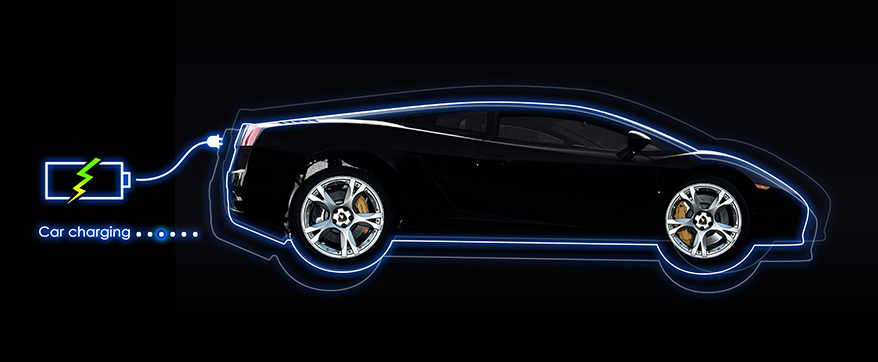Lithium-ion Battery Sticker-Types, Usage and Regulation
Oct 12, 2019 Pageview:2902
2019 is coming to a close end, with more than half the year already behind us. Lithium batteries have seen us through the evolution of technology with a broad range of applications in many scientific fields. As the festive season approaches, dealers and shippers of lithium batteries are expected to have been aware of the mandatory label changes that became effective from 1st January. Changes have been made to the IATA dangerous goods transport regulations, thus making the new labels and markings necessary.
There has been an uproar in the usage of stickers to promote different brands of lithium-ion batteries. Manufacturers are coming up with a broad network of creative stickers to promote their brands and attract potential buyers.??
Types of lithium-ion battery stickers
There are many types of stickers for different lithium-ion brands, and they include:
· Die-cut stickers
These are individual stickers that have been die-cut to the shape of the design used to identify the battery brand. They are easily made in any form and size suitable for the quality that the manufacturer desires.
· Roll stickers
These are stickers that are printed in a continuous line and then rolled to take the form of core cylinders. This is common for cylinder-type lithium-ion batteries, such as the ones used in remotes or digital cameras.
· Decals
These are pressure sensitive stock stickers used to brand an item for an extended period. Lithium battery brands can have decals stuck on trucks, for example, to promote their product.
· Sheet stickers
This is an easier way of getting the brand design printed in different shapes with multiple stickers on one convenient sheet. They make excellent sealers for battery packs, as well.
Usage of lithium-ion battery stickers
Stickers on lithium-ion batteries are a significant means of product identification. It all revolves around identifying the battery type or brand and relaying the necessary information required by rules and regulations set. Stickers provide relevant information to different parties of the battery on the quality, features, and validity of the product without testing it. The battery pack is more recognizable with the sticker and easily gradable. There are many uses of labels on lithium batteries which apply not only for consumers but also for manufacturers and distributors as well and they include:
1. Warnings
Lithium-ion batteries have been in the spotlight for their inherent capabilities of creating fire-related incidents. They are categorized as dangerous goods posing certain safety risks to users. The sticker on these batteries serves as a place the product warnings and cautions can be found. This makes people aware of the potential risks and encourages them to handle the cells with care.
2. Display battery contents
Stickers allow us to be mindful of the substances used in manufacturing the cells. One is able to know the properties of the battery pack and find out whether or not it will be the one suitable to power their device. This saves users the hassle of having to buy the wrong battery and only to realize it when they use it.
3. Pricing
Lithium-ion stickers are used to display, in certain brands, the prices of various battery packs. There may be instances where the manufacturer would like to prevent retailers from exploiting consumers using their products. The actual cost of the battery pack can, therefore, be imprinted on the stickers for the user’s advantage.
4. Instruction guide
Some stickers are used to give proper guidelines on how to carefully handle the battery. They guide the user on how to use them, and the appropriate charger required, or even the best storage method. This enables the user to maximize the effectiveness of the battery fully.
5. Creating a brand
Stickers are also used by the manufacturer to promote their business by creating a brand. It helps paint an attractive picture to potential buyers to assist them in identifying your brand. Take, for example, Eveready Batteries; the product is well-known by its logo anywhere.
6. Advertising
Stickers may be placed in may areas to give out that unique and seductive look. This helps in promoting the brand of the battery by advertising it so that potential buyers can be aware of its presence.
Regulations on lithium-ion battery stickers
According to IATA, lithium batteries are categorized as dangerous goods posing certain safety risks if not in line with the necessary transport regulations.?
For about two years now, dealers of lithium batteries and battery-powered appliances had had free will when it came to labeling. Their options were to either use the lithium battery handling label, “Caution,” or the original lithium battery mark. This has been possible within the transition period granted by the International and Domestic Regulations. However, as of 1st January of this year, the lithium battery mark has become a compulsory priority, while the handling label turned out to be outworn.?
In place of the sticker displaying “lithium-ion battery,” the new marks will have to show the specific UN number(s) concerning the battery shipment. This helps to quickly identify whether or not the package in transport contains single batteries or those packed together/inside the equipment. A telephone number is also necessary following the new regulations without any additional information added. Such extra information, depending on carrier policies, may be required on the package that can’t be displayed on the sticker/mark.?
The new lithium battery mark must have a border consisting of red diagonal hatchings with a width of 5mm minimum. The new symbol on the mark has got to be black and white and comprising of a group of batteries. One of the cells on the emblem needs to be damaged and emitting fire above the required UN number for a lithium-ion.?
Dealers and shippers of lithium batteries also had another free and similar option when it came to labeling. They could either use the new lithium battery Class 9 Hazard Class label or the standard Class 9 miscellaneous label. This was possible during the transition period before changes became compulsory. Since 1st January, all lithium battery transports will be required to display the new lithium battery Class 9 label.
Final thoughts
Manufacturers of lithium-ion batteries have to align their products following the newly regulated rules or laws before they finally decide to ship them out. One has to find out if their labeling or stickers are in compliance with the new regulations and transition their inventory of labels or stickers.
- Prev Article: 18650 Batteries In Parallel
- Next Article: Lithium-ion Battery Storage Charge
Leave Message
Hottest Categories
-
Hottest Industry News
-
Latest Industry News











